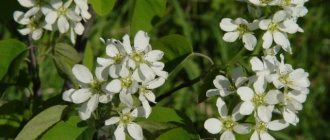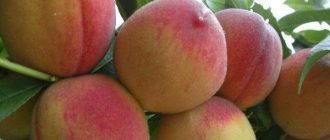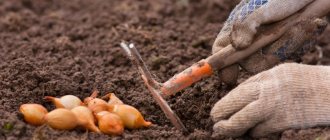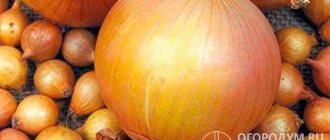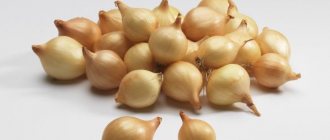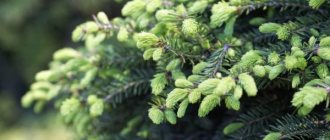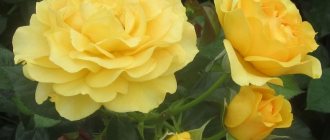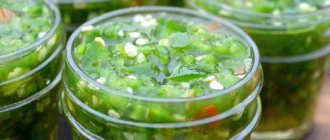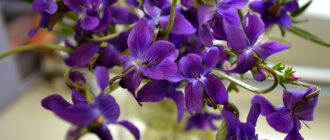Irgu can truly be called a universal plant.
It will grow well in almost any region of our country, except for the permafrost zone and the Black Sea subtropics (although some of its species also grow in the Caucasus).
This fruit shrub normally tolerates both drought and winter frosts of 45°, and its blooming flowers can withstand spring frosts up to 8°. Irga produces annual and very abundant harvests.
EVERYTHING YOU NEED FOR THIS ARTICLE IS HERE >>>
And the berries of the newest varieties are large, sweet and incredibly tasty, with a very pleasant subtle aroma. The harvest is harvested early, fruiting begins at the end of June and lasts for several weeks.
Description of the plant
Game or currant is a genus of plants of the Rosaceae family. The genus Amelanchier includes about 25 species of woody plants in the form of a bush or small tree. The name comes from the French word amelanchier or "little apple". In reality, the fruit is more similar to the fruit of berry plants.
The vast majority of species of the genus are found in America; plants are also found in Europe, Asia, and North Africa. The species are characterized by high variability, seasonal foliage, decorative flowering, beautifully colored leaves in autumn, which makes them extremely picturesque during this period. Plants belong to the order Rosaceae.
Irga is an unusual plant in ornamental gardens. It is rarely grown in containers because with good care it can grow into a fairly large tree. The range of plant heights is significant - from 20 cm to 20 meters. The tree in gardens has a gray, smooth bark that may crack over time.
Flowers. The shrub of serviceberry is covered in spring (April-May) with a huge number of small, very delicate, attractive flowers, collected in brushes at the ends of the shoots. Flowers appear before or during leaf development. The buds are pointed. The flowers are five-petaled and usually white, although there are varieties with a delicate pink or reddish tint.
Photo. Serviceberry flowers
The leaves of the serviceberry are round or elliptical, the veins are even and parallel. The leaves are located on long petioles, solitary, usually serrated. The leaves are dark green on top, the underside of the leaf blade has a paler green color, and in autumn the foliage shimmers with luminous colors - yellow-red or red.
Fruits . After flowering in July-August, small fruits appear - apples, initially red, after ripening - dark, with a bluish or purple tint, a bluish bloom. Small serviceberry apples are edible and sweet in taste. The fruits are not large - the smallest are 0.5 cm long, varieties with the largest fruits reach 1.5 cm. The taste of serviceberry berries is a little like blueberries, but serviceberry apples are much richer in vitamins, especially from group B, and contain a lot of magnesium and potassium. This is a valuable source of calcium and iron.
Photo. Serviceberry fruits
From the above information it is clear that the serviceberry has decorative flowers, although the flowering is short, and in the fall it has bright leaves. The fruits are less decorative; they are small, but edible, and are used in different ways, but more on that below. Birds love apples and enjoy this delicacy with pleasure. Birds help fight harmful insects, so it is worth attracting these winged guests to the garden.
What is irga
Irga is a pretty shrub, the fruits, leaves and bark of which have a large number of useful properties. It is a deciduous shrub that grows throughout the Northern Hemisphere. The plant can be found in the Far East and the Caucasus, Crimea and America. Irga often grows in forest clearings, in the mountains among thickets of various shrubs.
Irga is unpretentious to soil and can grow in any area except swampy areas, as it dies there. Needs good lighting for full ripening of berries. As a rule, up to 15 kg of fruit can be collected from one bush per season.
Some types and varieties
Today, about 25 species of serviceberry are known, differing mainly in height - from 30 cm to several meters. This difference in height can even occur within the same species. The main species often grown in our country is Canadian (Amelanchier canadensis). The genus Amelanchier includes the following common species.
- Canadian (Amelanchier canadensis),
- Round-leaved (A. ovalis),
- Spiked (Ar spicata),
- Alder (A. Alnifolia),
- Smooth (A. Laevis),
- Lamarck (A. Lamarckii),
- Treelike (A. arborea).
For serviceberry, the interspecific differences are really small, and even an experienced gardener may have problems recognizing them.
Canadian
The Canadian serviceberry (Amelanchier canadensis) is often found in Canadian gardens, but quite often these plants are planted in some European countries. The plant does not need too much heat. It takes the form of a tall bush, sometimes growing up to 7-8 meters with a much smaller width. It has no special requirements, blooms with honey and fragrant flowers in the spring, and is decorated with decorative autumn leaves in the fall. Produces juicy fruits that birds love.
Lamarck
Amelanchier lamarckii is a picturesque shrub also native to Canada and is sometimes mistakenly classified as a Canadian species (Amelanchier canadensis). At first glance, it is difficult to distinguish these two fruit bushes; they are very similar. The species differ mainly in height - Lamarck's shadberry can grow up to 7 meters, the crown is very wide and spreading.
In spring it blooms with decorative flowers. Its decorative clusters of flowers are white, the flowers are longer, reaching 4 cm in length.
A plant with low requirements. The flowers tolerate spring frosts down to minus 5-7 °C, so planting and caring for serviceberry in the Moscow region, Leningrad region, and the central zone will not create problems. It bears fruit in the third year after planting, every year up to 40-50 years. The blue-black fruits are harvested from mid-June to mid-July. The fruit is edible, sweet, very loved by birds.
The shrub is tolerant of conditions and is not problematic to grow. Both Canadian serviceberries and Lamarck produce very tasty fruits that can be processed and eaten raw. Therefore, both species are often planted in gardens.
Alder
Amelanchier alnifolia species. In our climatic conditions, you can also grow alder serviceberry, which is also very valuable, but less common. Plant height can exceed 5 meters. A valuable species due to its decorative flowering and fruits.
There are many varieties valuable for their edible fruit. Alder is becoming popular thanks to the creation of a new variety, “Obelisk,” which is distinguished by its yield.
Round-leaved
Species Amelanchier ovalis – round-leaved serviceberry. Natural habitats are found on the European and Asian continents. Shrubs reach 2 meters in height, so they are often used in small gardens. Plants have an upright shape. Undemanding, very resistant species, can be used for hedges.
Spiked
The shadberry (Amelanchier spicata), native to North America, grows 2 meters. An unpretentious plant, it has decorative flowering and tasty fruits.
Smooth
The species Irga smooth (Amelanchier laevis) has the form of a tall bush, reaching a height of 5 meters; taller specimens are also found. The plant is made decorative by fragrant, white flowers collected in clusters 10-13 cm long. Apple-shaped round fruits. The species has low requirements, is tolerant of unfavorable conditions, and is recommended for growing in gardens.
Interesting varieties
"Autumn Brilliance"
The serviceberry variety is primarily decorative and reaches a height of 7 meters. Takes the form of a small tree or tall bush with a straight crown. Flowers are collected in brushes 6-8 cm long. The variety is resistant to diseases.
Northline
The alder serviceberry variety is quite tall - up to 4 meters in height. At first the tree has a high, compact crown, then spreads up to 6 m in width. Characterized by large, tasty fruits. The fruits ripen fairly evenly. The plant is long-lived, the fruits are 16 mm in diameter, oval, blue-black with a bloom, sweet, tasty. A very productive variety.
Honeywood
A variety of alder serviceberry, grows up to 5 meters, the crown has an initial vertical and compact shape, old shrubs tend to grow to a width of 4 m. This is a long-lived plant, can live 50 years. The variety is characterized by high yield, the fruits are large with a diameter of about 16 mm, slightly flattened, blue-black with a bloom, very tasty.
"Pembina"
Alder serviceberry. The plant reaches a height of 4 meters. Characterized by large fruits that ripen evenly.
"Martin"
An alder-leaved variety with tasty and evenly ripening fruits. The plant can grow up to 3 meters and in width - up to 2 meters. Shrubs grow a little slower. The fruits have a diameter of about 15 mm, purple with a dark blue bloom.
"Smoky"
A variety of serviceberry with sweet fruits. The fruits ripen unevenly. The plant reaches a height of 4.5-5 meters. At first it grows upward, but later tends to increase the crown to a width of 6 m. Long-lived variety, fruit diameter from medium to 14 mm, spherical berries, blue-black with a bloom, tasty, very sweet. Productivity is high.
"Ballerina"
An early-blooming variety of the species Smooth serviceberry, very decorative flowers. Delicious fruits. Reaches a height of 3 meters.
"Robin Hill"
A tree-like variety of serviceberry up to 7 meters high. It blooms profusely and is characterized by tasty fruits.
"Obelisk"
The Obelisk variety of serviceberry blooms profusely and reaches a height of 5 meters.
"Cumulus"
Characterized by abundant flowering and fruiting. Plant height is up to 7 meters.
"Thiessen"
Abundantly fruiting variety of the alder species. Plant height is up to 5 meters.
When and how to replant an adult shrub of serviceberry
It is not advisable to transplant an adult (over 6 years old) bush to a new location. If such a need arises, you must adhere to the following recommendations.
- An adult plant is replanted in the fall, one and a half to two months before frost.
- The bush is replanted only together with a lump of earth.
- The length of the tap root must be left at least 0.8 m, the lateral roots - at least 1 m.
- The planting pit for the transplanted bush must be of appropriate size.
- Exposed roots should be wrapped with wet rags while the bush is being transported.
- After planting, the soil must be compacted well and watered generously.
Important! Mineral fertilizers cannot be used during transplantation; they can burn the roots.
Planting work
In order for the serviceberry to grow well, you should take care of the proper seedlings - preferably if they are in containers and have a closed root system. It is important for a plant to have good roots - you should carefully check their condition before purchasing plants.
Landing dates
Serviceberry should be planted in spring or fall, but early enough to prepare for winter. Although serviceberry and lamarck are frost-hardy, young seedlings that fail to establish a proper root ball may freeze early in cultivation.
Serviceberry seedlings with a closed root system, grown in containers, can be planted all season, even in the hottest weather.
Choosing a planting site and soil
Gardeners love Irga for its low maintenance requirements. In nature, the plant grows in open forests, ravines, on slopes, and river banks. And also in dry and rocky, sunny places, in low-lying and mountainous areas. Irga can adapt to various conditions.
The plant is not capricious, will grow in average soil, and is resistant to frost. Another advantage is high frost resistance, since during the winter rest period the plant can withstand temperatures down to minus 50 degrees Celsius. Although sometimes flowers are damaged by late spring frosts.
Like most fruit shrubs, serviceberry bears fruit best in full sun. This does not mean that it cannot be grown in a garden that receives partial shade or shade most of the day. In such places, the plant usually takes on a more bushy form, branches heavily and grows laterally, fruiting may be slightly less, and the fruits themselves are less sweet. In this case, the plant is suitable for hedges, but only for lovers of natural plantings, since it does not particularly like intensive pruning.
The plant can grow in sandy and even limestone soil, and there are no requirements regarding the pH level and soil type, or its permeability. The plant develops worse only on very compacted soils; the crown will not be as lush.
The most abundant harvests and the most magnificent fruits of irga are produced on permeable and humus soils, drained, from slightly acidic to slightly alkaline with a pH of 6.2-7.5.
Landing
If you plan to grow serviceberry fruits, you can plant many bushes next to each other. Optimal distance:
- between bushes - 1.5-2 meters,
- between rows - 3-4 meters.
Work progress:
- It is recommended to pre-fertilize the soil with compost and complex fertilizers based on phosphorus and potassium. Thanks to this, the plant will develop faster.
- Serviceberry seedlings are placed in the soil to a depth of about 60-80 cm. Dig a hole with a diameter of about 80 cm and a depth of 10-15 cm greater than the length of the root or the height of the root ball (the root reaches a radius of about 1.5 meters).
- The excavated soil must be loosened before filling into the hole. Large clumps of soil can cause root damage during backfilling or create air pockets.
- We plant the plants in the hole. A seedling without a root ball (with an open root system) is placed deeper. A serviceberry seedling in a pot is planted at such a depth that the top layer of the root ball is placed flush with the ground.
- When planting a seedling with an open root system, as you add soil around the seedling, you need to lightly pull it and lift it up. This way we straighten all the bent roots. Plant the seedling at such a depth that the root collar is covered with soil.
- After filling the hole, the soil is slightly compacted and watered abundantly.
Preparing serviceberry for planting
When you need to purchase seedlings of this bush for your site, you will need to pay attention to the following factors:
- A very important indicator of the quality of a seedling is its roots. They must be large, approximately three main branches about twenty-five centimeters long. When purchasing, the roots of the plant must be wet. If the roots are a little dry, the seedling may not take root at all, and even if it does take root, the shadberry will grow slowly and begin to bear fruit late;
- It is also necessary to pay attention to the bark of the seedling. If it is too dry and cracked, this may mean that the seedling was dug out of the ground too long ago and may no longer be alive. In this case, you need to peel off a little bark. If the trunk underneath turns out to be brown, then the bush, unfortunately, has already dried out. But if, nevertheless, the trunk under the bark is green, the seedling can be planted;
- If you buy serviceberry seedlings in the fall and they still have leaves, you need to carefully tear them off, being careful not to damage the buds.
When you transport the seedlings to your summer cottage, be sure to wrap the roots with a wet rag and wrap them in film or a bag.
Also, every gardener in the Moscow region needs to know that if he does not have the opportunity to plant seedlings on his plot immediately after purchasing, he will need, so that they do not disappear, to temporarily bury them in any other place of his summer cottage, the main thing is that there is enough dark place.
To do this, you will need to dig a small hole sloping to the south. The seedlings will also need to be placed in this hole at an angle, and not only the roots, but also part of the shoot, about half, will be covered with soil. Serviceberry seedlings can remain in this state for about a month; the main thing is not to forget to water them well.
It is not difficult to choose the location for the main planting of the shrub. Since this shrub is very unpretentious, it can be planted anywhere in your summer cottage.
Although for good growth it is better to plant this plant in well-moistened loamy or sandy loam soddy-podzolic soils. Also, the Canadian serviceberry does not like direct sunlight, although well-lit areas are ideal for it.
Growing and care
Irga is unpretentious in care. Even the most capricious species (round-leaved serviceberry) has no special requirements. Even a novice gardener can cope with growing this shrub. The plant is not demanding, but in order for the harvest to be high, it is important to provide optimal conditions.
Watering
In the early stages of growth, the plant should be watered; later it will cope without watering. However, it is worth watering it during long periods of drought, such as during standard garden watering.
Feeding
Irga should be well-charged with fertilizers during planting; there is no need to repeat fertilizing. However, after a few years, if the plant becomes less lush or begins to produce less fruit, you can feed it with universal complex fertilizers - optimally based on easily digestible phosphorus and potassium compounds. It is better to fertilize in the spring.
Trimming
The first pruning is done immediately after planting, preferably in the fall. As a result, the plants will bush faster and acquire a denser shape. However, the natural appearance of the shrub is very decorative, so there is no need for intensive pruning for decorative purposes.
In the future, cutting is necessary only when necessary, for example:
- to remove damaged shoots,
- for thinning branches when the crown is too thick.
It is worth carefully inspecting the plant in the spring and carrying out sanitary pruning when the first signs of fungal diseases after winter or other problems associated, for example, with freezing, are noticed. However, this happens very rarely, so there is nothing to worry about. Pruning is done every few years.
How to properly plant shadberry in the Moscow region?
The irga is ideal for planting in such a wonderful place as the Moscow region, since the weather conditions are the most optimal for this plant. In addition, practically all of its varieties are tenacious plants and you don’t have to be afraid that it will disappear during your absence from the dacha.
In general, there are no special or unique features of growing serviceberry. So, as you can see, everything is pretty standard.
Step-by-step instruction
- A plot of land is being prepared. In which the plant itself will be planted.
- Next, the plant itself is planted and nurtured for the rest of the time. Remember that you definitely need to cut it and collect the fruits, otherwise this can have a detrimental effect on the condition of the plant itself.
Reproduction
There are 4 methods of propagation of irgi:
- By seeds - generative propagation is not too tedious, but the period for entering fruiting will be longer, and varietal characteristics are not preserved.
- Root shoots.
- Green or semi-lignified cuttings.
- Dividing the bush.
Vegetative propagation of serviceberry is more complex than, for example, propagation of currants. In this respect, the plant is comparable to the propagation of chokeberry or blueberry. However, vegetative propagation makes it possible to obtain valuable material - homogeneous in genotypic characteristics, in appearance and productivity no different from the mother bushes. Plants obtained as a result of vegetative propagation begin to bear fruit earlier than those obtained as a result of propagation from seeds; the fruits on all bushes have the same appearance.
Regardless of the method of vegetative propagation, different varieties differ in their ability to produce well-rooted cuttings. As a rule, vigorous varieties are more easily propagated vegetatively than weak growing varieties.
Plant division
This is the least effective method of vegetative propagation. This method is used in amateur cultivation, especially when there are a small number of valuable shrubs that need to be propagated quickly.
The plant is dug up with a lump of soil and divided into several parts so that each has several roots and at least one shoot. With this propagation, one plant can produce several small plants suitable for planting in a new location. After planting, the seedling should be well watered and cut to 2-3 buds above the ground so that it takes root faster and bushes well. With good care, already in the first year such plants can produce several shoots 0.5-0.7 m high, on which flower buds will form, and the next year - the first fruits.
Reproduction by root shoots
Propagation by root shoots is also a form of plant division, which allows some types of serviceberry to produce more seedlings than with the usual division of a bush. Alder serviceberry is capable of producing underground shoots (root shoots). These shoots underground can reach a considerable horizontal length before reaching the surface. They grow in close proximity to the mother bush or a little further. After some time, these shoots form their own root system. This way the plant produces many additional side shoots, which increases its production potential.
These shoots can also be separated from the parent bushes to produce root cuttings. This is not a very effective method of propagation, but with good care of the mother plants and their cultivation in fertile and moist soil, many more seedlings can be obtained from a well-developed bush than by division. In addition, in this case, the parent plant remains in place and can bear fruit normally.
Root shoots must have a good root system; it should not be allowed to dry out before planting. Drying out the root system can cause the death of many cuttings after planting in a permanent place. After planting, such seedlings should be pruned.
According to Canadian research, root shoots are best harvested in early spring or late fall, when plants are dormant. Seedlings obtained by this method exactly repeat the characteristics of the mother plants, but after planting they may behave differently. Some grow quickly and well, others begin to grow rapidly only after 1-2 years.
Horizontal layering
You can propagate shadberry by horizontal layering. The work is carried out in the spring, around mid-May. Non-lignified, annual or young shoots of serviceberry are bent horizontally and attached to the ground using special hooks and staples. Vertical shoots sprout from such curved shoots of mother plants (from their buds), and roots form at their base.
The formation of roots is facilitated by sprinkling germinating shoots 2-3 times with soil, preferably with a mixture of soil and sawdust. Peat substrate can also be used for dusting.
Sprinkling time:
- The first time the shoots growing vertically are sprinkled with soil is when they reach a height of 15-20 cm;
- the second time - with a length of 20-25 cm;
- third – 25-30 cm.
The sooner you start sprinkling the shoots, the better they will take root. An important condition for good growth of young shoots is regular irrigation.
Propagation by cuttings taken from shoots
Cuttings are pieces of shoots or branches of side shoots, as well as roots. Cuttings taken from young plants root more easily than cuttings from older plants. Parts of plants that produce flowers and fruits are not suitable for taking cuttings for rooting. Cuttings should not be taken if plants are stressed by drought, high or low temperatures.
All cuttings must have at least 3 internodes. The best cuttings are found at the base of the bush (near the trunk or shoot) or are a side branch (growing horizontally).
Fast growing vertical shoots with long internodes (and very young, green, non-lignified shoots) are not suitable for producing green cuttings, since such cuttings produce poorly branching plants. Cuttings should be cut just below a leaf node or bud. Cuttings for rooting should be placed so that at least 2 leaf nodes are below the soil surface. After planting, cuttings should be well watered and protected from excessive sun by shade.
Propagation by green cuttings
Green cuttings are obtained from the apical parts of young shoots growing in the spring. They are usually cut at the turn of May and June, during their intensive growth. The upper part of the shoot should be removed, since this fragment has very moist and delicate tissue. The optimal length of a green cutting is 10-15 cm. Leaves are removed from the cuttings that will be placed in the ground. Leave the top 2 leaves; they are cut in half to reduce transpiration and moisture loss in seedlings that do not yet have roots.
The prepared cuttings are immersed in a rooting agent (a preparation containing hormonal compounds that stimulate root production) and planted in soil for rooting. The soil for rooting cuttings must be permeable and sterile. A mixture of perlite with peat or sandy substrate, made in a 1:1 ratio, is better suited. Cuttings should be sprayed with water to prevent the substrate from drying out, the leaves drying out and falling off the cuttings. The best way to increase humidity is through fogging.
Temperature is a key issue for propagation from green cuttings. Irga grows well in natural conditions, biologically well adapted to not too high temperatures (15-25 ° C).
After rooting, you can begin the process of hardening the seedlings, which consists of reducing the frequency of spraying or placing the plants, after transplanting them into pots, for several weeks in a shaded place.
Semi-lignified and lignified cuttings
According to professional Canadian literature, semi-lignified cuttings taken from the middle part of a growing shoot of serviceberry take root best. However, in practice, this method often ends in failure even when fogging is used. This method requires the ability to maintain the temperature in the greenhouse at about 25 °C. Unfortunately, on hot days the air temperature in the greenhouse can significantly exceed 25 °C.
Rooting woody cuttings often ends in failure. This is consistent with reports from Canadian researchers who stated that woody cuttings of serviceberry are very difficult to grow, even using special rooting, misting and heating of the substrate.
Root cuttings
These cuttings are pieces of roots with a diameter of 1-1.5 cm and a length of 5-10 cm. They are taken from the root of the mother plant in late autumn or early spring. If root fragments are taken in the fall, they should first be placed in a cold room for 2 months at an air temperature of + 4 °C. After this time, the seedlings are placed in plastic bags filled with moist peat substrate and stored in the dark for 3 weeks at 21 ° C. This promotes root growth within 2-4 weeks.
After this time, the cuttings can be planted in the nursery in prepared depressions in the ground, placing them 5 cm below the soil surface. Frequent, but not too abundant watering and shading promote good rooting of cuttings.
Sowing seeds
Serviceberry seeds are used for generative propagation. The juicy pulp of ripe fruits contains several small seeds. As the fruit ripens, the seeds become hard and dry. Mature seeds can germinate and produce offspring. However, not all seeds are well developed and viable. The seed coat is hard and not very permeable. In addition, they are in a state of rest. This means that cold seed stratification is necessary.
Studies conducted in Canada have shown that the germination of seeds in different species of serviceberry varies, depends on the genotype and ranges from 7% to 67%. The alder serviceberry is self-pollinating, so most of the plants obtained from sowing seeds basically retain the characteristics of the mother bushes, but about half of the population of seedlings deviates from the genotype in terms of growth, yield and fruit quality. Therefore, it is better to use seedlings obtained by vegetative propagation. Only such cuttings guarantee full preservation of the characteristics of the mother plants.
Seed propagation is used in breeding aimed at obtaining new varieties. For this purpose, the selected parental forms (genotypes) are crossed, resulting in fruits from controlled pollination. The seeds are extracted from the fruit and stratified so that they germinate well.
The seeds are mixed with wet, sterile, washed sand in a ratio of 3 parts sand: 1 part seeds. The mixture is placed in a plastic bag and placed in the refrigerator at 1-4 ° C for a period of several weeks to 3-4 months. The appearance of the first embryonic roots from the seeds indicates that the seeds have passed the dormant period and can be sown.
They are sown in a container containing a mixture of sand and peat substrate in a 1:1 ratio, and placed on a window sill in a greenhouse using lighting that allows them to withstand 16 hours of daylight. The temperature during the day should be maintained at 21-24 °C, at night 10 °C. Seedlings in the phase of two well-developed cotyledons are planted in small pots (7 × 7 × 9 cm), with a capacity of about 500 cm³, which are filled with a mixture of peat substrate and compost soil (1:1 ratio) and placed on the windowsill of the greenhouse.
Provided with good conditions for growth and development, seedlings reach a height of 30-40 cm in 2.5-3 months and can be planted in the ground. Over the next 4-5 years, a detailed assessment of seedlings is carried out in terms of specific characteristics and valuable specimens are selected that combine the most positive features of both parental forms.
Diseases and pests
Irga gets sick quite rarely. Fungal diseases can be found on neglected bushes, as well as when growing in conditions of excess humidity. The most common diseases of shadberry are shown in the table.
| Disease | Symptoms | Treatment and prevention |
| Ascochyta blight | Brown spots of irregular shape on the leaves. Affected leaves die and fall off. The frost resistance of the bush drops sharply. | Treatment with Bordeaux mixture 1% until the buds swell. In case of severe damage, repeat the treatment in the fall. Affected leaves must be destroyed. |
| Monilial rot | The berries rot and then dry up on the branch, becoming carriers of fungal spores. | Treatment with Bordeaux mixture 1% three times per season: before flowering, immediately after it and then two weeks later. |
| Powdery mildew | Light gray spots on leaves. The affected leaf then darkens and falls off. | Treatment with Tiovit Jet or Raek. Infected leaves should be torn off and burned. |
| Pestalocy | The leaves begin to turn brown at the edges. The border between healthy and diseased tissue is yellow. | As with ascochyta blight |
| Septoria spot | Numerous round small brown spots on the leaves. | As with ascochyta blight |
Insect pests are rarely found on this shrub. But they exist. The table lists some of them.
| Insect | What harm do they cause? | Methods of control or prevention |
| Rowan moth | The caterpillars of this butterfly live in berries. | At the end of the flowering period, the bushes are sprayed with karbofos or a similar preparation. It is recommended to re-treat 10–14 days after the first. |
| Serum beetle | The seed-eater larva lives inside the fruit, feeding on its seeds. | -//- |
| Rowan moth | Butterfly caterpillars feed on fruit pulp | -//- |
Important! The most serious pest of serviceberry are birds that peck the berries. To protect the crop, special nets must be used.
Fruit value
The fruits of the serviceberry ripen in the summer. During this period, the trees are besieged by birds (starlings, robins).
The berries are edible and can be eaten raw or processed (jams, jams, confitures, tinctures). They are an excellent decoration for cakes and pastries, enlivening desserts with their taste. You can also dry or freeze them. Dried serviceberries make an excellent, relatively low-calorie snack that can be used in baked goods or granola.
Often these fruits are underestimated, but more and more people are learning about the beneficial properties of serviceberry, so interest in them is growing.
Small, edible, light fruits are delicious. Some believe that they combine the taste of chokeberries with the unique taste of blueberries.
The fruits contain:
- anthocyanins;
- vitamins C, A, B;
- malic acid;
- proteins;
- fats;
- fiber;
- iron;
- potassium;
- calcium.
The fruits are rich in minerals and have better medicinal properties than blueberries. 100 g of serviceberry fruit contains 7 times more calcium and iron than blueberries, as well as 4 times more potassium and protein and 2 times more vitamin C.
Irga contains a large amount of anthocyanins - these antioxidants are an ally in the prevention of many diseases, have a positive effect on the circulatory system, and strengthen the overall immunity of the body.
The fruits can help lower blood pressure and are an excellent remedy for colds and upper respiratory tract infections. They also slow the progression of glaucoma and help treat skin diseases, especially lichen planus. Due to their healing properties, the fruits slow down skin aging, which is why they are called “the fruits of eternal youth.”
Features of growing crops
Despite the general unpretentiousness of the plant, in order to obtain a harvest of healthy berries, it is necessary to follow a number of rules for growing the crop.
Landing dates
Perennial seedlings can be planted throughout the warm season, but spring planting is more common.
- In spring, seedlings are planted from April to the end of May, depending on the weather in the region. The main criterion for planting is warming the soil to +8 +10 degrees. In such soil, the roots quickly adapt and begin to work.
- In summer, it is possible to plant seedlings with a closed root system (bushes are sold in pots). Irga is planted using transshipment methods without destroying the root ball. Be sure to shade the plantings from the scorching sun and maintain high air humidity by spraying.
- In autumn, shadberry is planted in regions with warm climates. The best month for planting is September, at this time it is still warm and there is enough rain. At least 45 days must pass from planting the seedling to the onset of frost. During this time, the plant will take root and overwinter safely.
Choose a convenient place
Irga grows well both in places exposed to the sun and in partial shade. At the dacha, perennials are often given areas along the borders, using the plants as a living fence. You can include shadberry in decorative garden compositions by planting it in the background.
The shrub loves fertile, structured soil with a neutral or slightly acidic reaction. Wetlands, peat bogs and places with close underground rivers are not suitable for cultivation.
As an ornamental plant, pyrus can live on any type of soil, but to obtain a harvest, the soil must be refined.
Preparing the selected area
Before planting the seedlings, the bed is dug up, freeing the roots of weeds and inorganic debris. If the soil is over-compacted and contains a lot of clay, add crushed stone or coarse sand, 7-8 kg per 1 square meter. m.
It is impossible to grow a fruit plant without the use of fertilizers. To plant serviceberry, given the longevity of the tree, it is necessary to thoroughly fill the planting holes.
On one hole lay:
- a bucket of rotted manure or 60 g of urea;
- 1 liter jar of wood ash or 80 g of superphosphate and 40 g of potassium salt.
You can use any complex long-acting fertilizer for apple trees, according to the instructions.
Planting in open ground
For the seedling, recesses are dug, 45 cm deep and 40 cm in diameter. 6 cm of crushed stone or broken brick (expanded clay) is poured onto the bottom as a drainage cushion. Then there is a layer of soil mixed with fertilizers, 15 cm thick.
The seedling is removed from the pot and planted in the center of the hole. The roots are spread to the sides and covered with soil, pressing tightly with your hand.
The planted shadberry is watered abundantly. The tree trunk circle is mulched with straw, grass or wood chips.
On a note. For decorative purposes, gardeners often use grassing - sowing lawn grasses and white clover into the tree trunks. Herbaceous turf reliably protects the soil from overheating and looks beautiful.
Application in landscape
Irga is one of the plants suitable for small and large gardens. You can plant it as one accent against the background of the lawn or in a group. This is a great suggestion for creating a loose hedge.
Irga is a truly unique plant, so it is expected that, in the wake of the fashion for healthy food, it will appear more and more often in our gardens. This ornamental plant develops very quickly and does not require special attention.
Advantages and disadvantages
You need to figure this out if you are deciding whether you need irga on your site. Varieties for the Moscow region - all as one - are very tenacious and prolific. They will not dry out in the hottest summer and will not freeze out in the harshest winter, and from spring until autumn they will diligently occupy your site with young shoots. Therefore, you need to remember to take care of your garden. Moreover, watering and fertilizing play not the first role; the most important thing is to restrain the growth of the serviceberry, shape its crown and give shape to the bushes joined in a row. But with the shoots it will be more difficult; they will still come out, no matter how much you destroy them.
However, many gardeners still want their irga to grow. Varieties for the Moscow region are surprisingly durable and hardy plants that, no matter what, will produce a harvest.
Useful properties of the shadberry plant
You have the right to ask: “What are the benefits of shadberry? What are its medicinal properties? A little higher I wrote that the shadberry does not need to be sprayed with chemicals. It follows that irga gives us an environmentally friendly berry. Nowadays this is a great rarity and a great luxury.
I’ll digress a little from the topic and quote the words of the chief specialist of one of the horticultural farms: “in order to obtain marketable products (meaning apples), it is necessary to carry out 16-17 chemical treatments.” How do you like it? There is reason to think about it. But this is a topic for another discussion.
Let's return to our topic. Serviceberry fruits contain sugar, tannins, ascorbic acid, carotene, etc. But the medicinal properties of shadberry will interest you most of all. People say that garlic cures a hundred ailments, celery cures ninety diseases, but shadberry occupies the golden mean in terms of the usefulness of its use. So, everything in order. The fruits are usually consumed fresh. In folk medicine, juice and fresh berries are used for stomach disorders, in the treatment of vitamin deficiency, and to strengthen the body. Serviceberry berries strengthen the walls of blood vessels. For those who have insomnia, it is useful to eat both fresh and dried serviceberry berries. Eating serviceberry berries prevents heart attacks. Anyone who has varicose veins should have shadberry on the menu. For sore throat, stomatitis and inflammation of the gums, you need serviceberry juice. Also, drinking serviceberry juice prevents the formation of blood clots. And a tincture of serviceberry flowers treats a diseased heart and lowers blood pressure. What can be prepared from serviceberry? You can make jelly, compote, wine, jam, juice.
Natural jam from serviceberry
To preserve all the beneficial properties of serviceberry as much as possible, we make jam simply at home. Here is his recipe. Grind the ripe fruits of the serviceberry in a meat grinder, mix with sugar in a 1:1 ratio, place all this in a jar and in the refrigerator. It happens that sometimes you need to stir the jam so that it does not ferment. You can also simply put ripe serviceberry berries in some container in the freezer. And in winter you can cook something from it.
So, you can see for yourself that propagating, planting, growing irgi is not easy, but very simple. And the result will be an environmentally friendly, tasty berry and a beautiful plant - a decoration for your site.
I hope this material has inspired you to plant serviceberry in your dacha or garden plot. All the best to you!
The following materials:
- 28/11/2011 00:09 — The benefits of quince are great, and it is quite easy to grow. Our distant ancestors called the fruits of this tree golden apples. Why gold? In ancient times...">Quince - cultivation and beneficial properties
- 10/10/2011 22:53 — Fertilizers for your garden
- 07/31/2011 14:39 — Such a necessary sea buckthorn If you have a plot of land, then there is no reason not to grow sea buckthorn. This plant has not only...">Sea buckthorn - cultivation, planting, care, varieties. Sea buckthorn recipes and use in folk medicine
- 11/03/2011 22:25 — Optimal distances between trees and shrubs
- 02/17/2011 06:21 — So, the correct planting of fruit trees at home in the garden How often do we plant trees? They dug a hole, stuck a tree seedling in it, sprinkled it with soil...">Planting fruit trees on the advice of experts
General characteristics
The common serviceberry is a fast-growing shrub belonging to the Rosaceae family.
The fruits have a beautiful dark blue or purple color depending on the variety. Irga is a long-liver and does not require special care. Thus, one shrub in natural conditions can live up to 50 years, producing from 5 to 10 kg of berries every year. At the same time, dying trunks are replaced by new ones after a few years. The beneficial properties of serviceberry berries have long been known in folk medicine, but today few people have ever heard of such a plant. The juicy pulp contains a lot of useful elements: sugars, a whole complex of vitamins, tannins, carotene, coumarins, pectins, etc.
In this case, you only need to plant it on the site and provide minimally comfortable conditions and care - the shadberry will cope completely independently. It is not afraid of severe drought or wind, can grow on any soil (except swampy) and tolerates harsh Russian winters well. This endurance is explained by the morphological structure of the shrub - its roots go deep into the ground (2 m or more), receiving maximum nutrition from the bowels of the earth. Irga can grow and produce useful fruits even in urban environments where the air is heavily polluted.
https://youtube.com/watch?v=anfdCAC5o18
Often an adult shrub of serviceberry is confused with a real powerful tree. Up to 25 trunks can grow from one base, the height of which sometimes reaches 8 m.
Beneficial features
Irga (photo) is an excellent remedy for seasonal vitamin deficiency and is used to prevent colds and viral diseases. If you regularly consume shadberry, the chances of getting an acute respiratory infection or the flu are minimized. You can eat it either fresh or dry, frozen, in the form of jam, jam or compote. Even after heat treatment, the berries retain a large amount of vitamins.
People suffering from or at risk of cardiovascular disease are also recommended to eat serviceberry berries regularly. Thanks to the beta-sitosterone they contain, blood cholesterol levels are noticeably reduced. Irga prevents heart attacks, varicose veins, improves immunity, removes toxins from the body, and also reduces harm from exposure to electromagnetic radiation, which is extremely useful for all residents of large cities.
Contraindications for use
Despite the obvious benefits of serviceberry berries, they have a number of contraindications for consumption:
- Since it lowers blood pressure, it is better for hypotensive patients to refrain from treatment with berries.
- The active substances in the composition may cause drowsiness, so it is better to take medications with irga at night.
- The fruits increase blood clotting, so they are not recommended for people suffering from thrombophlebitis.
Important: if you collect shadberry in the forest, be careful not to confuse it with buckthorn. Buckthorn fruits can only be consumed one year after harvest, otherwise you may get severe poisoning
How to prune a plant
It is best to form shadberry in the form of a multi-stemmed bush from powerful basal shoots, and remove weak ones.
The first pruning of the bush is carried out during planting; no more than six healthy buds are left on the young plant. Shoots then grow from them. Until the age of three, you need to preserve all the shoots, and then leave no more than three of the annual growth. Be sure to preserve strong and healthy branches. Every year the bush should have about 15 branches from different growths. If their growth deteriorates, then once every 4 years it is worth doing anti-aging pruning. But this procedure can only be performed with bushes that have already reached ten years of age.
To make harvesting more convenient for you, shorten the branches to the desired height. After pruning, the irga grows independently with root shoots.
Features of care in the first years of life
In the first year after planting, the irga grows well; cultivation and care are carried out without any special features. The main thing that is required is that in early spring, before the buds swell and bloom, you need to trim all vertically growing branches of the bush, reducing their height by a quarter.
Pruning and formation of an adult bush
A properly formed serviceberry bush produces many times more fruit than a plant that has not been pruned and shaped. If the shadberry is grown as a decorative garden decoration, its crown also needs a “stylish hairstyle”. Mature branches need this procedure most of all.
It is important to prune the plant correctly so as not to cause more harm than good.
The main task is to rejuvenate the shadberry. There are two types of this processing: thinning and shortening. When thinning, weak, diseased branches and branches growing deep into the crown are removed entirely. Thinning must be done every year. During shortening, only the tip of the shoot is removed, and several buds remain intact. Thus, it is possible to change the appearance of the crown; it becomes denser and wider due to young shoots.
If you want to fill the void in the center of the crown, you need to remove the shoot, leaving only the outermost bud, which is directed inside the bush. Later, a vertical shoot will grow from this bud. The shadberry is shortened several times: during the first treatment, during the procedure of forming a young crown, and also when the plant goes up strongly and harvesting becomes difficult.
Important! Serviceberry fruits contain B vitamins, ascorbic acid, anthocyanins, pectin and beta-sitosterol, which is an effective cholesterol antagonist.
Pruning of the shrub shrub is done in the spring before the buds swell or in the fall, when the leaves fall.
